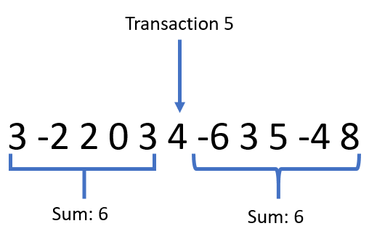Weekly Challenges
Solve the challenge, share your solution and summit the ranks of our Community!Also available in | Français | Português | Español | 日本語
IDEAS WANTED
Want to get involved? We're always looking for ideas and content for Weekly Challenges.
SUBMIT YOUR IDEA- Community
- :
- Community
- :
- Learn
- :
- Academy
- :
- Challenges & Quests
- :
- Weekly Challenges
- :
- Challenge #117: Credit/Debit Midpoints
Challenge #117: Credit/Debit Midpoints
- Subscribe to RSS Feed
- Mark Topic as New
- Mark Topic as Read
- Float this Topic for Current User
- Bookmark
- Subscribe
- Mute
- Printer Friendly Page
- Mark as New
- Bookmark
- Subscribe
- Mute
- Subscribe to RSS Feed
- Permalink
- Notify Moderator
Last week's solution is now up - find it here!
This week, we are looking at a few accounts. In this set of data, there are 4 accounts. The first row of every account represents the number of credits/debits against the account, and the second row represents the actual credits and debits paid against the account in the order they were paid. Your task is to find the credits and debits where the sum of debits and credits BEFORE any transaction is equal to the sum of debits and credits AFTER it. Please count the transactions from 0 to match the answer. Below is a picture that illustrates the logic of which transactions should be captured. The picture represents the second account.
Sample logic:
- Mark as New
- Bookmark
- Subscribe
- Mute
- Subscribe to RSS Feed
- Permalink
- Notify Moderator
Joe, Typo - The challenge start file name says #116, not #117; also the header in the file needs to be correct too.
- Mark as New
- Bookmark
- Subscribe
- Mute
- Subscribe to RSS Feed
- Permalink
- Notify Moderator
@JoeM was counting the challenges with a zero based index, just like THIS challenge.
- Mark as New
- Bookmark
- Subscribe
- Mute
- Subscribe to RSS Feed
- Permalink
- Notify Moderator
- Mark as New
- Bookmark
- Subscribe
- Mute
- Subscribe to RSS Feed
- Permalink
- Notify Moderator
Because there are <10 accounts, I just used the multi-row tool, but I plan to re-do this with an iterative macro that would work no matter how many accounts there are.
- Mark as New
- Bookmark
- Subscribe
- Mute
- Subscribe to RSS Feed
- Permalink
- Notify Moderator
My solution! Practicing my speed-solving for the Grand Prix :)

Cheers!
NJ
- Mark as New
- Bookmark
- Subscribe
- Mute
- Subscribe to RSS Feed
- Permalink
- Notify Moderator
I like the way that you eliminated the noise that @JoeM inserted into the problem. I also learned from your use of the parse that instead of \s you could literally use a space character. I don't like it, but it is possible.
Good luck in the Grand Prix!
Cheers,
Mark
Chaos reigns within. Repent, reflect and restart. Order shall return.
Please Subscribe to my youTube channel.
- Mark as New
- Bookmark
- Subscribe
- Mute
- Subscribe to RSS Feed
- Permalink
- Notify Moderator
Thanks, @MarqueeCrew!
I periodically go rogue on the shortcuts with syntax, though probably not as intentionally as you might think haha... In this case, I didn't even think to use \s. It's been that kind of Monday. You get a gold star for catching onto that though! :)
NJ
- Mark as New
- Bookmark
- Subscribe
- Mute
- Subscribe to RSS Feed
- Permalink
- Notify Moderator
Do you know why I would object to the use of the SPACE instead of \s?
It surely caught my eye.
BTW, when I was solving this I was using a JOIN with the two sorted streams coming back together. I find your solution more straight-forward.
Chaos reigns within. Repent, reflect and restart. Order shall return.
Please Subscribe to my youTube channel.
- Mark as New
- Bookmark
- Subscribe
- Mute
- Subscribe to RSS Feed
- Permalink
- Notify Moderator
The space is not as obvious as the \s, for sure - it appears to be nothing, but is in fact something! Can't get anything (or nothing!) past you, @MarqueeCrew!
-
Advanced
301 -
Apps
26 -
Basic
158 -
Calgary
1 -
Core
157 -
Data Analysis
185 -
Data Cleansing
5 -
Data Investigation
7 -
Data Parsing
14 -
Data Preparation
238 -
Developer
36 -
Difficult
86 -
Expert
16 -
Foundation
13 -
Interface
39 -
Intermediate
268 -
Join
211 -
Macros
62 -
Parse
141 -
Predictive
20 -
Predictive Analysis
14 -
Preparation
272 -
Reporting
55 -
Reporting and Visualization
16 -
Spatial
60 -
Spatial Analysis
52 -
Time Series
1 -
Transform
227
- « Previous
- Next »


